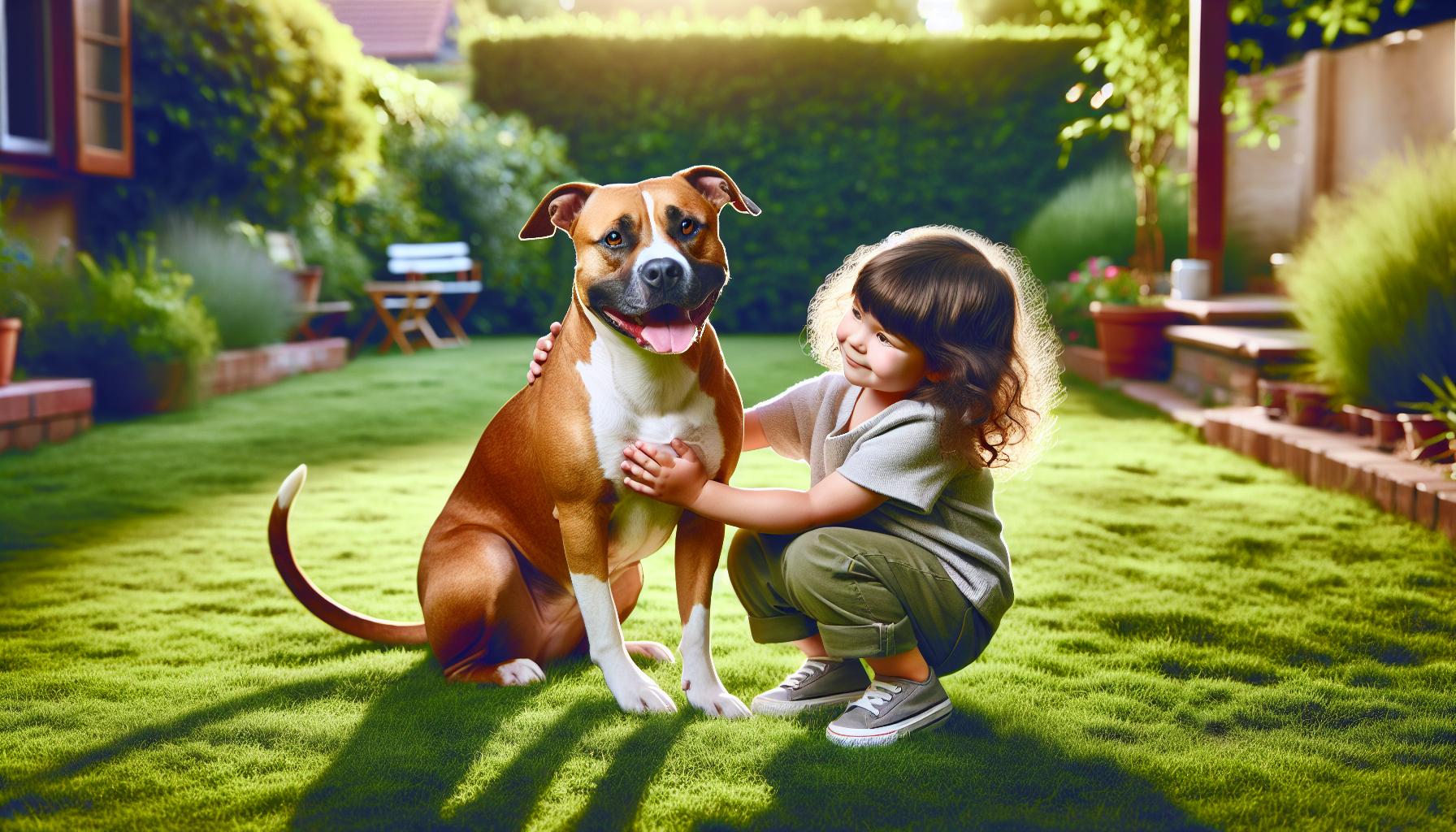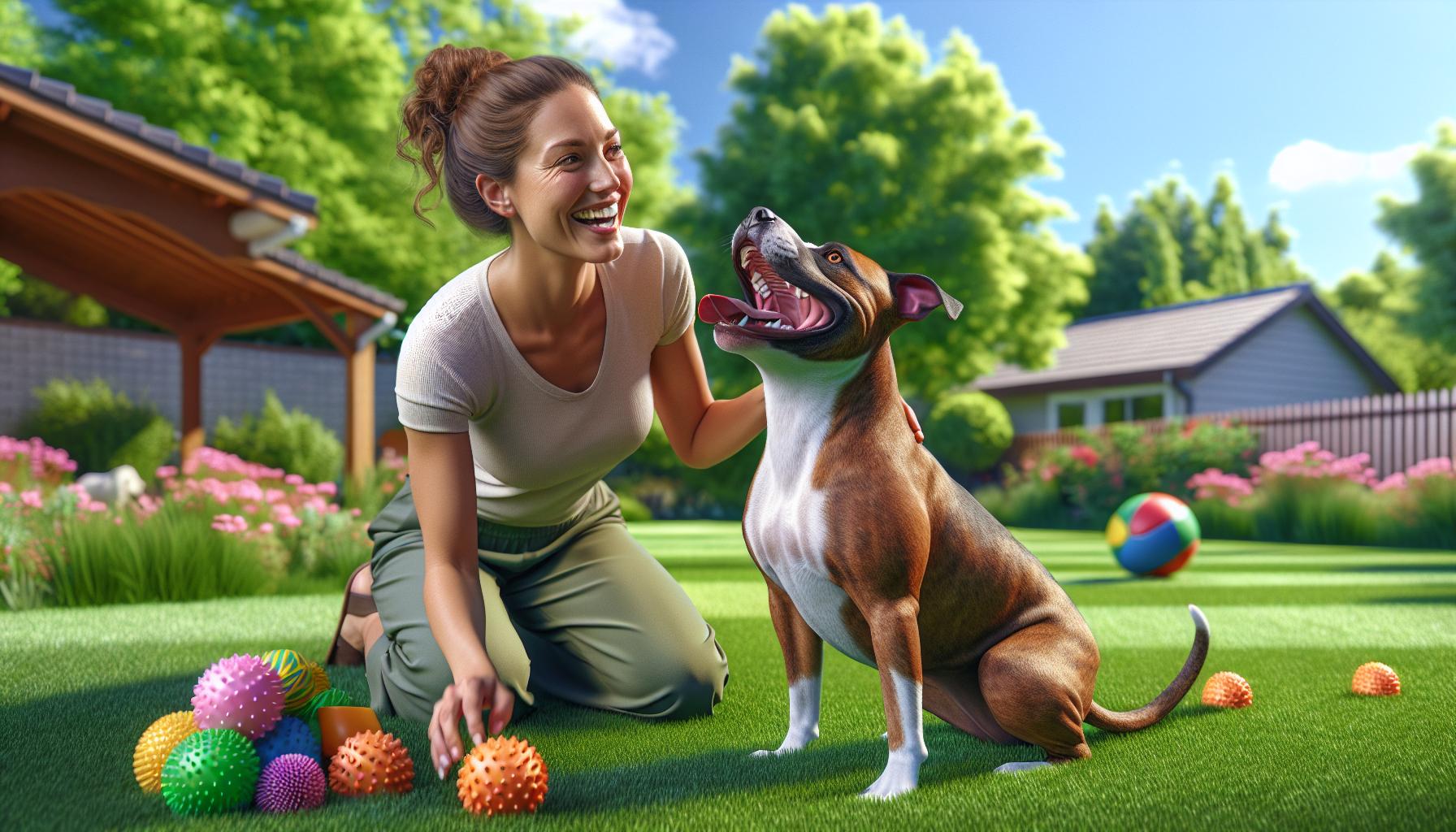I’ve always been fascinated by the American Pit Bull Terrier, a breed that’s often misunderstood but deeply loved by many. These dogs, with their muscular build and loyal nature, have a rich history in American culture.
Despite their controversial reputation, pit bulls are known for their intelligence, affection, and unwavering devotion to their families. As an owner myself, I’ve experienced firsthand the joy and companionship these dogs can bring. In this article, I’ll dive into the truth about pit bulls, exploring their characteristics, temperament, and the importance of responsible ownership.
Key Takeaways
- American Pitbulls are loyal, affectionate dogs with a muscular build and rich history in American culture.
- Proper training and socialization from an early age are crucial for developing well-behaved Pitbulls.
- Despite common misconceptions, Pitbulls are not inherently aggressive and can make excellent family pets when raised responsibly.
- Regular exercise, mental stimulation, and proper nutrition are essential for maintaining a healthy American Pitbull.
- Responsible ownership, including adherence to local laws and public education, is key to combating breed-specific legislation and stereotypes.
American:jtf6jsmblbs= Pitbull
The American Pitbull Terrier is a breed with a complex history and distinctive physical traits. I’ll explore the origins and unique characteristics that define this often misunderstood dog breed.
Origins and History
The American Pitbull Terrier’s roots trace back to 19th-century England and Ireland. Bred from Old English Bulldogs and various terrier breeds, these dogs were initially used for bull-baiting and ratting. When immigrants brought them to America, the breed evolved into a farm dog and family companion. Despite their fighting history, responsible breeders have focused on developing the breed’s loyal and affectionate traits. The United Kennel Club recognized the American Pitbull Terrier in 1898, solidifying its status as a distinct breed.
Physical Characteristics
American Pitbull Terriers are known for their muscular build and athletic appearance. These medium-sized dogs typically weigh between 30-60 pounds and stand 17-21 inches tall at the shoulder. Their short, smooth coat comes in various colors and patterns, including brindle, blue, and white. Pitbulls have a broad, flat head with a wide muzzle and strong jaw. Their ears are often cropped, though this practice is controversial and unnecessary. The breed’s most striking features are its powerful chest, well-defined muscles, and expressive eyes that convey intelligence and warmth.
The Temperament of American Pitbulls

American Pitbulls are known for their complex and often misunderstood temperament. I’ve observed firsthand that these dogs possess a unique blend of traits that make them both beloved companions and subjects of controversy.
Loyal and Affectionate Nature
Pitbulls exhibit remarkable loyalty and affection towards their families. I’ve seen them form deep bonds with their owners, often displaying a strong desire to please. They’re typically:
- Gentle with children, earning the nickname “nanny dogs”
- Enthusiastic cuddlers, often seeking physical contact
- Sensitive to their owner’s emotions, offering comfort when needed
- Eager to participate in family activities and outings
Their affectionate nature extends beyond their immediate family, as they’re often friendly with strangers when properly socialized. This sociability makes them poor candidates for guard dogs, contrary to popular belief.
Misconceptions and Stereotypes
Despite their loving nature, Pitbulls face numerous misconceptions:
- Aggression: While they can be protective, well-raised Pitbulls aren’t inherently aggressive
- Unpredictability: Properly trained Pitbulls are as predictable as any other breed
- Locking jaws: This is a myth; Pitbulls’ jaws function like those of other dogs
- High bite force: Studies show their bite force is comparable to other breeds of similar size
These stereotypes often stem from media sensationalism and irresponsible ownership. I’ve found that education and positive exposure are key to dispelling these myths and showcasing the true nature of American Pitbulls.
Training and Socialization

Training and socializing American Pit Bull Terriers is crucial for their development into well-behaved, confident dogs. I’ve found that early, consistent training and positive socialization experiences are key to nurturing their best qualities and preventing behavioral issues.
Early Puppy Training
Early puppy training for American Pit Bulls starts as soon as they come home, typically around 8 weeks old. I focus on basic commands like “sit,” “stay,” and “come,” using short, frequent sessions to maintain their attention. Potty training begins immediately, with a consistent schedule and positive reinforcement for success. Crate training is introduced early, creating a safe space for the puppy and aiding in house training. Socialization with various people, animals, and environments starts early, exposing the puppy to different stimuli in a controlled, positive manner.
Positive Reinforcement Techniques
Positive reinforcement is the most effective training method for American Pit Bulls. I use treats, praise, and toys as rewards for desired behaviors, strengthening the bond between dog and owner. Clicker training works well, associating the click sound with rewards to mark correct behaviors instantly. Consistency is key – all family members use the same commands and reward system. I avoid punishment-based methods, as they can lead to fear or aggression in this sensitive breed. Instead, I redirect unwanted behaviors and reward alternative, positive actions. Training sessions are kept short, fun, and engaging to maintain the Pit Bull’s enthusiasm and prevent boredom.
Health Considerations for American Pitbulls

As a responsible American Pitbull owner, I’ve learned that understanding and addressing their health needs is crucial for their well-being. These dogs are generally healthy, but they’re prone to certain conditions that require attention and care.
Common Health Issues
American Pitbulls can face several health challenges:
- Hip dysplasia: A genetic condition affecting the hip joint
- Allergies: Skin irritations often caused by environmental factors or food sensitivities
- Heart disease: Including aortic stenosis and valve malformations
- Hypothyroidism: An underactive thyroid gland leading to weight gain and lethargy
- Eye problems: Such as cataracts and progressive retinal atrophy
Regular veterinary check-ups, at least once a year, help detect these issues early. I’ve found that maintaining a health journal for my Pitbull aids in tracking any unusual symptoms or changes in behavior.
Exercise and Nutrition Needs
American Pitbulls thrive with proper exercise and nutrition:
Exercise requirements:
- 1-2 hours of daily physical activity
- Mix of walks, runs, and play sessions
- Mental stimulation through puzzle toys and training exercises
Nutrition guidelines:
- High-quality, protein-rich dog food
- Appropriate portion sizes based on age, weight, and activity level
- Limited treats, not exceeding 10% of daily caloric intake
- Fresh water available at all times
I’ve noticed that meeting these exercise and nutrition needs significantly impacts my Pitbull’s overall health and behavior. A well-exercised and properly fed Pitbull is typically calmer, happier, and less prone to destructive behaviors.
American Pitbulls as Family Pets
American Pitbulls make excellent family pets when properly trained and socialized. Their loyal and affectionate nature, combined with their intelligence and eagerness to please, makes them well-suited for family life.
Interaction with Children
American Pitbulls often excel in their interactions with children. Their patient and gentle demeanor makes them ideal playmates for kids of all ages. I’ve observed that well-socialized Pitbulls are typically:
- Tolerant of children’s energetic play
- Protective without being aggressive
- Attentive to their young family members’ emotions
It’s crucial to teach children how to properly interact with dogs, including respecting the Pitbull’s space and not disturbing them while eating or sleeping. Supervision is always recommended, especially with younger children, to ensure positive interactions.
Compatibility with Other Pets
When it comes to living with other pets, American Pitbulls can be compatible with proper introduction and management. Their compatibility often depends on:
- Early socialization with other animals
- Individual personality traits
- The temperament of the other pets in the household
I’ve found that many Pitbulls coexist peacefully with other dogs and even cats when raised together from a young age. However, due to their strong prey drive, caution is necessary when introducing them to smaller pets like rabbits or rodents.
To ensure successful multi-pet households:
- Introduce pets slowly and in controlled environments
- Provide separate feeding areas to prevent resource guarding
- Offer individual attention to each pet to avoid jealousy
- Maintain consistent training and reinforcement of good behavior
By following these guidelines and understanding the unique needs of American Pitbulls, families can create harmonious households where these loving dogs thrive alongside children and other pets.
Breed-Specific Legislation and Controversies
Breed-specific legislation (BSL) targeting American Pit Bull Terriers remains a contentious issue. These laws often restrict or ban ownership of pit bulls and similar breeds based on perceived aggression. I’ve observed that BSL stems from misconceptions and media sensationalism rather than scientific evidence.
Several studies challenge the effectiveness of BSL:
| Study | Findings |
|---|---|
| American Veterinary Medical Association (2014) | No evidence that breed-specific bans reduce dog bites or attacks |
| Journal of the American Veterinary Medical Association (2013) | Factors like owner behavior and training have more impact on dog aggression than breed |
| National Canine Research Council | Breed is a poor sole indicator of aggression |
Opponents of BSL argue:
- It’s ineffective in improving public safety
- It’s costly to enforce
- It unfairly targets responsible pet owners
- It leads to increased shelter populations and euthanasia rates
Proponents of BSL claim:
- It reduces dog attacks
- It protects public safety
- It addresses perceived dangers associated with specific breeds
Many animal welfare organizations, including the American Society for the Prevention of Cruelty to Animals (ASPCA) and the Humane Society of the United States, oppose BSL. They advocate for breed-neutral laws that focus on responsible pet ownership and individual dog behavior.
Some cities and countries have repealed BSL after finding it ineffective:
- Netherlands (2008)
- Italy (2009)
- Ohio (2012)
These reversals highlight the growing recognition that breed-specific bans don’t effectively address dog-related public safety concerns.
The controversy surrounding American Pit Bull Terriers extends beyond legislation. Media portrayal often perpetuates negative stereotypes, leading to public misconceptions. This has resulted in:
- Difficulty in adopting pit bulls from shelters
- Higher insurance premiums for pit bull owners
- Housing restrictions for families with pit bulls
To combat these issues, education and advocacy efforts focus on:
- Promoting responsible pet ownership
- Highlighting positive pit bull stories
- Encouraging breed-neutral policies
- Supporting research on canine behavior and genetics
By addressing these controversies and promoting fact-based discussions, we can work towards fair treatment of American Pit Bull Terriers and their owners while ensuring public safety through responsible pet ownership practices.
Responsible Ownership of American Pitbulls
As an experienced American Pitbull owner, I’ve learned that responsible ownership is crucial for these intelligent and loyal dogs. Here are key aspects of responsible Pitbull ownership:
Proper Training and Socialization
Consistent training and socialization are essential for Pitbulls. I start training my Pitbulls at 8 weeks old, focusing on:
- Basic obedience commands
- Positive reinforcement techniques
- Early socialization with people and other animals
- Crate training for a safe space
Regular Exercise and Mental Stimulation
Pitbulls are energetic dogs that require:
- 1-2 hours of daily physical activity
- Interactive toys for mental stimulation
- Varied exercise routines (walks, runs, playtime)
Proper Nutrition and Health Care
A healthy Pitbull is a happy Pitbull. I ensure:
- High-quality, protein-rich diet
- Regular veterinary check-ups
- Monitoring for breed-specific health issues
- Maintaining a health journal
Legal Compliance and Insurance
Given breed-specific legislation in some areas, I:
- Research local laws regarding Pitbull ownership
- Obtain necessary licenses and permits
- Secure appropriate liability insurance
Spaying/Neutering
To prevent unwanted litters and reduce aggression, I:
- Spay/neuter my Pitbulls at the appropriate age
- Consult with my veterinarian about the best timing
Secure Housing
Pitbulls are strong dogs, so I provide:
- Sturdy fencing to prevent escapes
- A comfortable indoor living space
- Safe outdoor areas for exercise
Public Education and Advocacy
As a responsible owner, I:
- Educate others about Pitbull temperament
- Advocate for fair breed-neutral laws
- Showcase positive Pitbull behavior in public
By adhering to these principles, I ensure my American Pitbulls are well-adjusted, happy, and positive ambassadors for their breed.
Amazing Dogs
American Pit Bull Terriers are remarkable dogs with a rich history and unique characteristics. Through responsible ownership training and socialization they can become loving family companions. I’ve seen firsthand how these misunderstood dogs thrive when given proper care and attention. By dispelling myths promoting education and advocating for fair treatment we can ensure a brighter future for pit bulls. It’s my hope that more people will experience the joy and loyalty these amazing dogs bring to our lives.

